- عنوان کتاب: Guideline on haemoglobin cutoffs to define anaemia in individuals and populations
- نویسنده: World Health Organization
- حوزه: کم خونی
- سال انتشار: 2024
- تعداد صفحه: 79
- زبان اصلی: انگلیسی
- نوع فایل: pdf
- حجم فایل: 1.35 مگابایت
این دستورالعمل توسط وزارت تغذیه و ایمنی مواد غذایی سازمان جهانی بهداشت (WHO) هماهنگ شده است. دکتر ماریا نیوس گارسیا-کاسال این سند را با راهنمایی فنی اعضای کمیته راهبری سازمان جهانی بهداشت تهیه کرد: دکتر لیزا راجرز، دکتر خوان پابلو پنیا-رزاس، و دکتر فرانچسکو برانکا (بخش تغذیه و ایمنی مواد غذایی). دکتر آندریا بوسمن (برنامه جهانی مالاریا)؛ دکتر موریس بوکاگو و دکتر یوکا سومی (بخش سلامت مادر، نوزاد، کودک و نوجوان و پیری). و دکتر Özge Tuncalp Mingard (بخش تحقیقات و سلامت جنسی و باروری). متدولوژیست های این راهنما دکتر سوزان نوریس برای اولین جلسه گروه توسعه راهنما (GDG) و دکتر ماریا نیوز گارسیا-کاسال برای سری جلسات دوم GDG بودند. سایر اعضای دپارتمان تغذیه و ایمنی مواد غذایی که در تدوین این دستورالعمل شرکت کردند عبارتند از دکتر الین بورگی، خانم مونیکا فلورس-اوروتیا و دکتر لارنس گرومر-استراون.
WHO به ویژه از پروفسور Sant-Rayn Pasricha از موسسه تحقیقات پزشکی والتر و الیزا هال در استرالیا و دکتر ماریا النا جفردز و دکتر آندریا شارما از مراکز کنترل و پیشگیری از بیماری های ایالات متحده (CDC)، ایالات متحده آمریکا، تقدیر می کند. پشتیبانی فنی و مشارکت آنها در طول توسعه این دستورالعمل.
تشکر ویژه از نویسندگان تجزیه و تحلیل پایگاه داده و بررسی های سیستماتیک و همچنین
به نویسندگان بررسیهای متون سفارشی که برای اطلاع از این دستورالعمل استفاده شدهاند، برای کمک و همکاری آنها در تهیه یا بهروزرسانی این بررسیها. ما از بازخورد ارائه شده توسط تعداد زیادی از سهامداران بین المللی در طول فرآیند توسعه دستورالعمل قدردانی می کنیم.
WHO با سپاسگزاری از ورودی فنی اعضای GDG درگیر در این فرآیند، به ویژه روسای مشترک دو جلسه در مورد این دستورالعمل، پروفسور بورلی-آن بیگز، دانشگاه ملبورن، استرالیا (در سال 2019)، و دکتر ملیسا، قدردانی می کند. F. Young، دانشگاه اموری، ایالات متحده آمریکا (در سال 2022). به عنوان نمایندگان شرکای فنی پروژه، دکتر پاسریشا و دکتر جفردز اعضای GDG نبودند، اگرچه آنها به صورت فردی شرکت کردند و در برخی از جلسات ریاست مشترک داشتند. سومین جلسه GDG به ریاست WHO برگزار شد.
WHO از داوران همتا تشکر می کند: دکتر عمر دری، آژانس توسعه بین المللی ایالات متحده (USAID)، ایالات متحده آمریکا. دکتر سورل نامست، برنامه بررسی جمعیتی و سلامت، ایالات متحده آمریکا؛ دکتر نلی زاوالتا، موسسه تحقیقات تغذیه، پرو؛ و دکتر مایکل زیمرمن، موسسه فناوری فدرال سوئیس، سوئیس، برای بازخورد متفکرانه خود در مورد نسخه اولیه این دستورالعمل.
از دکتر سوزان نوریس، خانم ماریون بلکر و خانم ربکا توماس از دبیرخانه کمیته بازبینی دستورالعملهای سازمان جهانی بهداشت و اعضای کمیته بازبینی دستورالعملهای سازمان جهانی بهداشت برای حمایت فنی در طول فرآیند تشکر میکنیم. همچنین از خانم آلما آلیک از دپارتمان انطباق و مدیریت ریسک و اخلاق سازمان جهانی بهداشت برای حمایت او در مدیریت رویههای تضاد منافع تشکر میکنیم.
WHO از USAID برای حمایت مالی سخاوتمندانه آنها تشکر می کند. WHO همچنین CDC، به ویژه برنامه بین المللی پیشگیری و کنترل سوء تغذیه با ریزمغذی ها، و بنیاد بیل و ملیندا گیتس را به دلیل ارائه حمایت مالی از کار وزارت تغذیه و ایمنی غذا تأیید می کند. این شرکا در تدوین یا رای دادن به بیانیه های هنجاری شرکت نکردند.
اهداکنندگان، ناظران، و بازبینان خارجی در هیچ تصمیمی مرتبط با فرآیند توسعه دستورالعمل، از جمله ترکیب سؤالات تحقیق، عضویت در گروههای راهنما، انجام و تفسیر ترکیب شواهد، یا فرمولبندی راهنما شرکت نکردند.
This guideline was coordinated by the Department of Nutrition and Food Safety of the World Health Organization (WHO). Dr Maria Nieves Garcia-Casal prepared this document with technical guidance from the members of the WHO Steering Committee: Dr Lisa Rogers, Dr Juan Pablo Peña-Rosas, and Dr Francesco Branca (Department of Nutrition and Food Safety); Dr Andrea Bosman (Global Malaria Programme); Dr Maurice Bucagu and Dr Yuka Sumi (Department of Maternal, Newborn, Child, and Adolescent Health and Ageing); and Dr Özge Tuncalp Mingard (Department of Sexual and Reproductive Health and Research). The methodologists of this guideline were Dr Susan Norris for the first Guideline development group (GDG) meeting and Dr Maria Nieves Garcia-Casal for the series of second GDG meetings. Other members of the Department of Nutrition and Food Safety who participated in the development of this guideline include Dr Elaine Borghi, Ms Monica Flores-Urrutia, and Dr Laurence Grummer-Strawn.
WHO especially acknowledges Professor Sant-Rayn Pasricha from the Walter and Eliza Hall Institute of Medical Research, Australia, and Dr Maria Elena Jefferds and Dr Andrea Sharma from the United States Centers for Disease Control and Prevention (CDC), United States of America, for their technical support and partnership during the development of this guideline.
Special thanks are extended to the authors of the database analyses and systematic reviews, as well as
to the authors of the commissioned literature reviews used to inform this guideline, for their assistance and collaboration in preparing or updating these reviews. We appreciate the feedback provided by a large number of international stakeholders throughout the guideline development process.
WHO gratefully acknowledges the technical input of the members of the GDG involved in this process, especially the co-chairs of two of the meetings on this guideline, Professor Beverly-Ann Biggs, University of Melbourne, Australia (in 2019), and Dr Melissa F. Young, Emory University, United States of America (in 2022). As representatives of technical partners for the project, Dr Pasricha and Dr Jefferds were not GDG members, although they participated in an individual capacity and co-chaired some meetings. A third meeting of the GDG was chaired by WHO.
WHO thanks the peer-reviewers: Dr Omar Dary, United States Agency for International Development (USAID), United States of America; Dr Sorrel Namaste, Demographic and Health Surveys Program, United States of America; Dr Nelly Zavaleta, Instituto de Investigación Nutricional, Peru; and Dr Michael Zimmermann, Swiss Federal Institute of Technology, Switzerland, for their thoughtful feedback on a preliminary version of this guideline.
Thanks are due to Dr Susan Norris, Ms Marion Blacker and Ms Rebekah Thomas from the WHO Guidelines Review Committee Secretariat, and members of the WHO Guidelines Review Committee for their technical support throughout the process. Thanks are also due to Ms Alma Alic from the WHO Department of Compliance and Risk Management and Ethics for her support in the management of conflicts of interest procedures.
WHO thanks USAID for their generous financial support. WHO also acknowledges CDC, especially the International Micronutrient Malnutrition Prevention and Control programme, and the Bill & Melinda Gates Foundation, for providing financial support to the work of the Department of Nutrition and Food Safety. These partners did not participate in the development of or voting on the normative statements.
Donors, observers, and external peer-reviewers did not participate in any decision related to the guideline development process, including the composition of research questions, membership of the guideline groups, conduct and interpretation of the evidence synthesis, or guidance formulation.
این کتاب را میتوانید از لینک زیر بصورت رایگان دانلود کنید:
Download: Guideline on haemoglobin cutoffs to define anaemia in individuals and populations
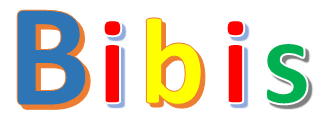












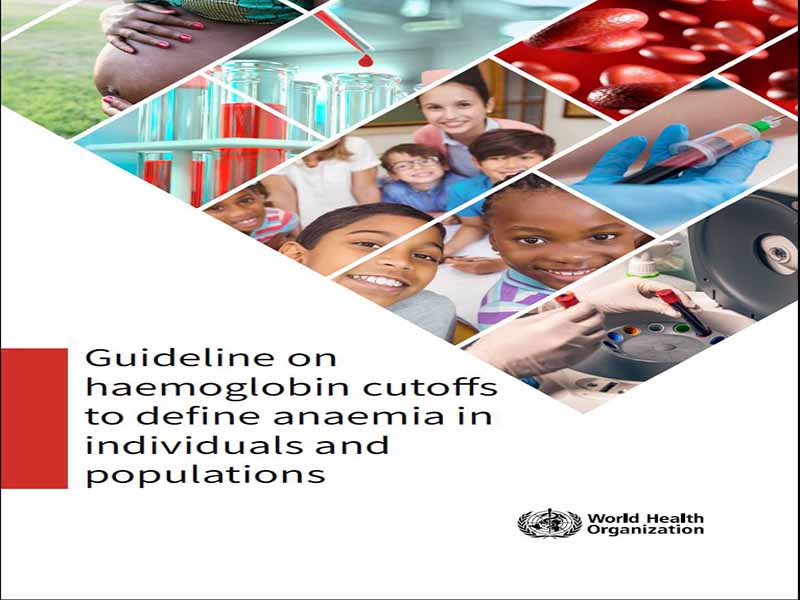
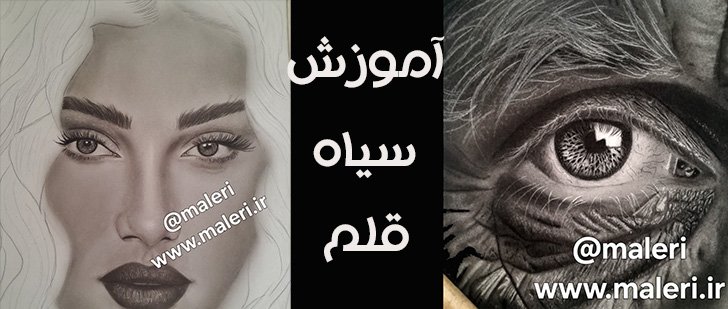
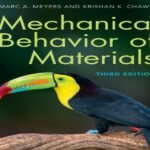



















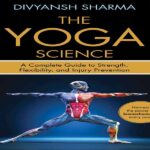
نظرات کاربران